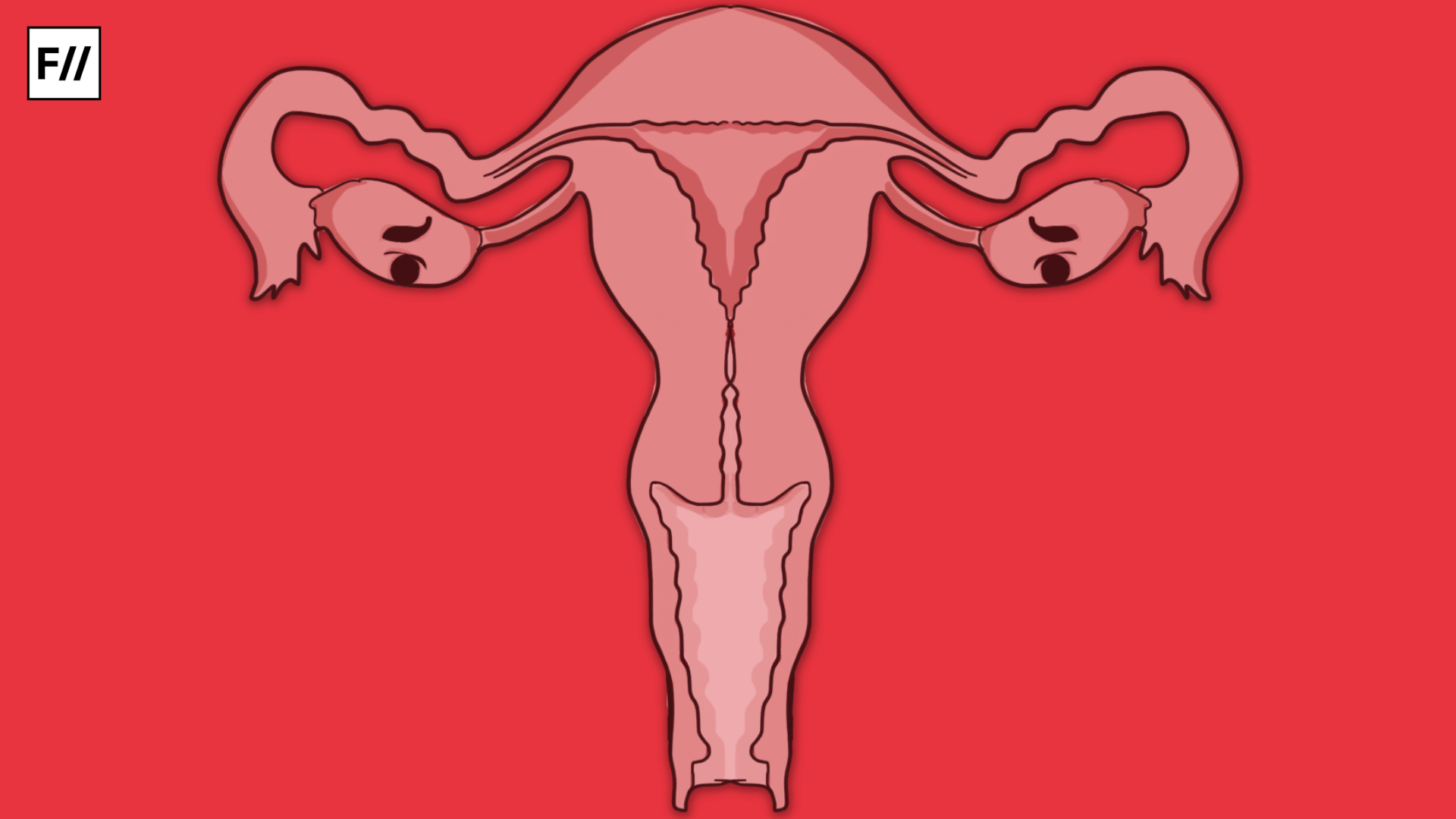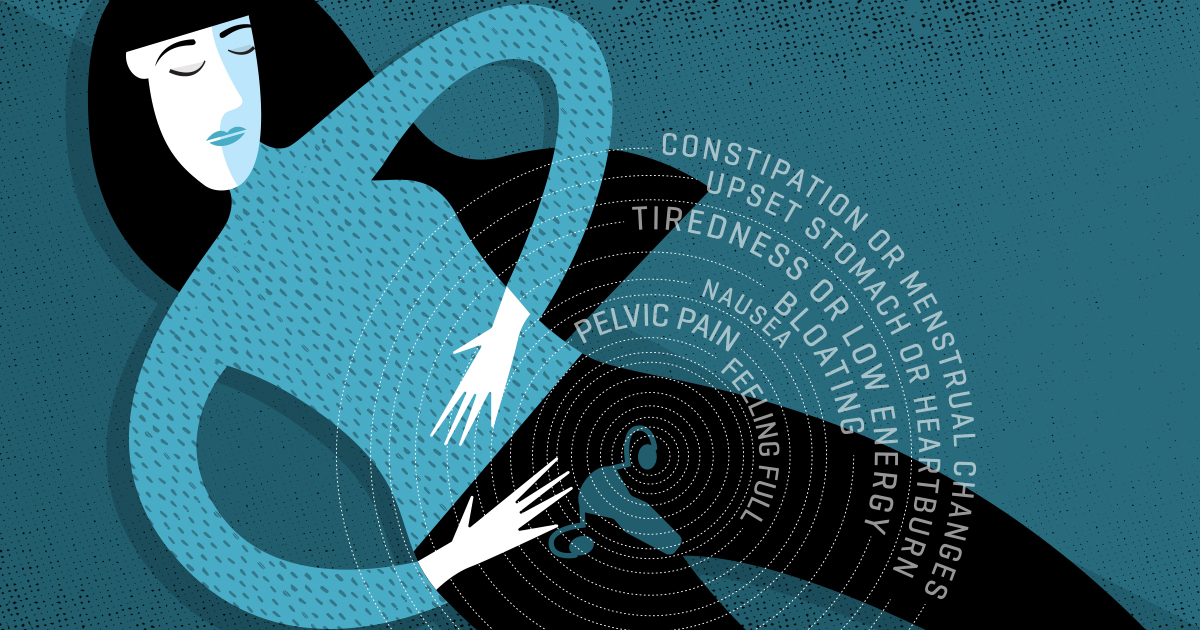Ovarian cancer is one of the rarest and the most elusive cancers found in people with ovaries and uterus. Ovarian cancer, as the name suggests, is a cancer in the ovaries. The set of two ovaries on either side of the uterus are the size of an almond and are responsible for producing eggs (ova) that become part of the embryo. Ovaries also produce the hormones estrogen and progesterone both of which are incredibly important for the functioning of the reproductive system.
Ovarian cancer is the growth of cancerous cells that form in the ovaries. In other words, the cells in the ovaries multiply quickly and uncontrollably to form a tumour which then invades and destroys healthy body tissues. The US National Library of Medicines has research evidencing that most ovarian cancers begin in the epithelial cells (cells found on the surfaces and cavities of your body) at the end of one of the fallopian tubes, from where the cancerous cells migrate to the ovary.
The cancer can also begin in epithelial cells that form the lining of the abdomen. This form of cancer, called primary peritoneal cancer, often spreads to the ovaries. It can also occur even if the ovaries have been removed. Germ cell tumours are rare ovarian cancers that tend to occur at a younger age.
Symptoms of ovarian cancer
The symptoms of ovarian cancer are dormant for most people and are hard to detect. They can resemble the symptoms of other conditions such as premenstrual syndrome (PMS), irritable bowel syndrome (IBS), or a temporary bladder problem. However, in ovarian cancer, the symptoms will persist and the discomfort will get more prominent with time.
The early symptoms of ovarian cancer include pain or pressure in the pelvic area, unexpected vaginal bleeding, pain in the back or abdomen, bloating, feeling of fullness while eating, frequent urination, constipation. Other symptoms include fatigue, abdominal swelling, pain during sex and irregular menstrual pattern. These symptoms are very similar to those of a host of other medical conditions, so the key to timely medical intervention is monitoring symptoms. If they persist for over two weeks, it is best to consult a doctor.
The diagnosis of ovarian cancer usually starts with examining symptoms like how long they have been persisting, whether they respond to home remedies or over the counter medications, the other impacts of the symptoms on overall health, and the like. Since the ovaries are located deep within the body, diagnosis in physical examination may not always be possible. Ovarian cancer can be detected through the combination of a few diagnostic procedures like blood tests, transvaginal ultrasound, pelvic and abdominal examination and CT scans
Risks, treatment procedure
Ovarian cancer is rare in women younger than 40 years old. Most ovarian cancers develop after menopause and the risk gets higher as the person ages. People with a family history of breast, ovarian, or colon cancers, having a specific BRCA1 or BRAC2 gene mutation, a first full-term pregnancy after the age of 35, those using hormone therapy after menopause, and people who rely on fertility treatment and hormone based medication are at an increased risk of developing ovarian cancer. Apart from that, obesity and smoking also may contribute to developing the condition.
According to the American Institute for Cancer Research, as of 2018, “Ovarian cancer is the 18th most commonly occurring cancer” in females and persons having female reproductive organs. It is also the “eighth most commonly occurring cancer” in female bodies. Ovarian cancer is not easy to detect at earlier stages which also makes it one of the deadliest cancers of the female reproductive organs. Although commonly found in older women, the average age of detection being 63 years of age, we must still be briefed about the signs and symptoms as it is also one of the most curable cancers.
Also read: Premenstrual Syndrome: PMS Is Not About ‘Bad Moods’ That Can Be Dismissed Easily

Diabetes is also a risk factor that is connected to ovarian cancer. Diabetes affects more than 72 million Indians, and about 14 per cent of Indian women. Studies have suggested that diabetes is associated with an increased risk of cancer in several sites of the body.
Currently, there is no conclusive evidence that trans men (particularly those who were assigned female at birth and transitioning from female to male) have a higher risk of developing ovarian cancer. In case of ovaries having been removed as part of gender affirmation surgery or prevention of breast cancer, the risk of developing ovarian cancer is decreased but is not eliminated.
Symptoms of ovarian cancer may appear in the early stages but become prominent only later. Most women experience bloating, pain in the lower back, pelvis, and abdomen, and an increased need to urinate. But these symptoms are rarely examined and women are not encouraged to consider medically exploring them because gender roles assume that this kind of discomfort is the physical destiny of women. The situation is even worse in the case of trans individuals
The diagnosis of ovarian cancer usually starts with examining symptoms like how long they have been persisting, whether they respond to home remedies or over the counter medications, the other impacts of the symptoms on overall health, and the like. Since the ovaries are located deep within the body, diagnosis in physical examination may not always be possible. Ovarian cancer can be detected through the combination of a few diagnostic procedures like blood tests, transvaginal ultrasound, pelvic and abdominal examination and CT scans.
Prevention, paying attention to the body
Symptoms of ovarian cancer may appear in the early stages but become prominent only later. Most women experience bloating, pain in the lower back, pelvis, and abdomen, and an increased need to urinate. But these symptoms are rarely examined and women are not encouraged to consider medically exploring them because gender roles assume that this kind of discomfort is the physical destiny of women. The situation is even worse in the case of trans individuals.
Ovarian cancer is a serious condition, but if detected early, it is also a curable kind of cancer in most cases. In order to make sure that timely help is sought, we must normalise regular health check ups and monitoring symptoms. All discomfort must be monitored, journaled and taken seriously so that health is not compromised. Initiating more conversations, increasing medical literacy, ensuring access to medical help and encouraging people to consistently undergo medical examinations on a routine basis are necessary to prevent, as well as detect conditions like ovarian cancer while it can be controlled.
Also read: What Is Postpartum Depression? : Addressing The Complexities Of Post Childbirth Mental Health
Featured Image: Ritika Banerjee for Feminism In India
About the author(s)
Aarthi (she/they) is a young feminist, currently based out of Jodhpur, who enjoys writing on pop culture and art-related subjects. Through her writings, she attempts to position herself between self-reflection and social conversation leading to the exploration of unconventional ideas. In her free time, she travels, writes poetry, watches films and anime





